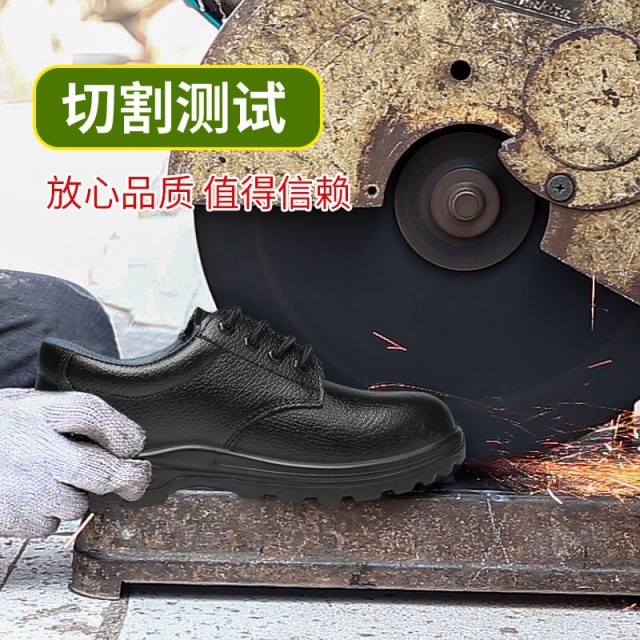Manufacturing environments demand safety footwear that meets strict regulatory standards while keeping workers comfortable during long shifts. This guide breaks down the essential criteria for selecting compliant safety boots, from hazard-specific protections to ergonomic designs that prevent fatigue.
Safety Challenges in Manufacturing Environments
Manufacturing floors present unique hazards that require specialized footwear solutions. Understanding these risks is the first step in selecting appropriate safety boots.
Heavy Machinery and Impact Hazards
- Falling objects: Overhead cranes and assembly lines pose crushing risks
- Rolling equipment: Forklifts and pallet jacks necessitate toe protection
- Sharp debris: Metal shavings and broken glass require puncture-resistant soles
Research shows that foot injuries account for a significant percentage of manufacturing accidents, with most incidents involving impact or compression forces.
Slippery Floors and Electrical Risks
- Oil/grease spills: Common in automotive and metalworking facilities
- Wet processes: Food processing and pharmaceutical clean rooms
- Live wires: Maintenance teams need electrical hazard protection
Slip-resistant soles and proper insulation become critical when workers encounter these conditions daily.
Key Features of Compliant Safety Boots
Decoding ASTM/OSHA Toe Protection Standards
All manufacturing safety boots must meet ASTM F2413 standards for:
✔ Impact resistance (minimum 75 foot-pounds)
✔ Compression resistance (minimum 2,500 pounds)
✔ Puncture resistance (tested against 270+ pounds)
Steel vs. Composite Toe Comparison
| Feature | Steel Toe | Composite Toe |
|---|---|---|
| Weight | Heavier | ~30% lighter |
| Temperature | Conducts heat/cold | Insulates better |
| Durability | More durable | Less impact-resistant |
| Best For | Construction | Electrical work |
Slip-Resistant Sole Materials and Testing
Top-performing materials for oily surfaces:
- Vulcanized rubber (Vibram): Superior grip and durability
- Thermoplastic polyurethane (TPU): Oil/chemical resistance
- Nitrile rubber: Excellent traction in wet conditions
Look for boots tested against ASTM F2913 slip resistance standards, especially if workers encounter lubricants or hydraulic fluids.
Electrical Hazard Ratings Explained
While OSHA doesn't specify footwear standards, compliant boots should:
- Provide insulation against live circuits
- Meet ASTM F2413-18 EH rating for electrical hazards
- Avoid conductive materials (important for maintenance crews)
Balancing Safety and Worker Comfort
Ergonomic Design for 12-Hour Shifts
Features that reduce fatigue:
◼ Contoured footbeds: Support arches during prolonged standing
◼ Shock-absorbing midsoles: Reduce joint stress
◼ Rockered soles: Promote natural gait movement
Workers wearing properly fitted safety boots report significantly lower rates of plantar fasciitis and lower back pain.
Breathable Materials vs. Durability
Advanced material solutions:
- Waterproof membranes: Keep feet dry without sacrificing breathability
- Moisture-wicking liners: Prevent blisters in hot environments
- Abrasion-resistant uppers: Balance airflow with protection
Top Picks for Manufacturing Roles
Foundry Work Recommendations
- Maximum heat resistance (leather with reflective coatings)
- Metatarsal guards for molten metal splash protection
- Non-conductive materials to prevent static discharge
Assembly Line Considerations
- Lightweight composite toes for constant movement
- Anti-fatigue insoles for stationary workstations
- Static-dissipative soles for electronics manufacturing
Upgrade Your Safety Footwear Program with 3515
As a leading manufacturer, 3515 partners with distributors and bulk buyers to deliver OSHA-compliant safety boots combining certified protection with all-day comfort. Our production expertise ensures you get:
✓ Custom configurations for specific hazards
✓ Bulk order efficiencies without quality compromises
✓ Latest material technologies for worker acceptance
Contact our team to discuss your facility's unique requirements and discover how proper safety footwear can reduce injuries while improving productivity.
Related Products
- Wholesale Customizable Suede Safety Boots - Puncture-Proof with Velcro Closure
- Puncture-Resistant Velcro Safety Boots for Wholesale & Custom Manufacturing
- Safety Footwear Wholesale Manufacturer for Custom OEM/ODM Production
- Durable Leather Moc Toe Work Boots for Wholesale & Custom Manufacturing
- Durable Moc-Toe Wedge Work Boots | Wholesale Manufacturing for Brands
Related Articles
- How to Choose Work Boot Materials for Maximum Safety and Durability
- How to Extend Work Boot Lifespan: Science-Backed Care for Safety & Savings
- Matching Men’s Work Shoe Safety Technologies to Workplace Hazards
- Work Boots vs. Western Boots: How to Choose the Right Footwear for Labor Safety
- How Safety Work Boots Engineer Protection: Features and Standards for Targeted Hazard Mitigation



















